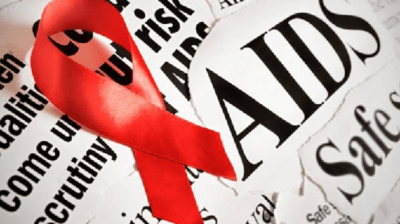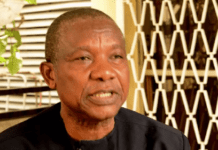
A new report released by the Joint United Nations Programme on HIV/AIDS has revealed that treatment coverage among children living with HIV is poor.
According to the report, globally, an estimated 800,000 children living with HIV did not receive treatment in 2021.
The report, titled; “In Danger,” launched by UNAIDS showed that children living with HIV are often being left behind.
The UNAIDS report indicates that every day, 4.000 people—including 1,100 young people (aged 15 to 24 years)—become infected with HIV.
The report warns that if current trends continue, 1.2 million people will be newly infected with HIV in 2025, which is three times more than the 2025 target of 370,000 new infections.
The report notes that progress against HIV had slowed down since the COVID-19 pandemic while lamenting that the human impact of the stalling progress on HIV is chilling.
It noted, “As HIV testing and treatment programs expand, children living with HIV are often being left behind. In 2021, an estimated 800 000 (640, 000– 990, 000) children living with HIV were still not receiving HIV treatment.
“Children comprised four percent of people living with HIV in 2021 but 15 percent of AIDS-related deaths, and the gap in HIV treatment coverage between children
and adults is increasing rather than narrowing.”
The report also revealed that in 2021, 650,000 (500,000–860,000) people died of AIDS-related causes, amounting to one every minute.
The UNAIDS report pointed out that without accelerated action to prevent people from reaching advanced HIV disease, AIDS-related causes will remain a leading cause of death in many countries.
The report further said the continued rising new HIV infection in some regions could halt or even reverse progress made against AIDS-related deaths.
According to the report, HIV funds from bilateral donors other than the US have plummeted by 57 percent over the last decade, adding that HIV investments have not replaced lost international funding, mainly due to worsening economic conditions.
“The World Bank projects that 52 countries, home to 43 percent of people living with HIV, will experience a significant drop in their public spending capacity through 2026.
“Progress is slowing as resources available for HIV in low- and middle-income countries decline, leaving their HIV responses US$ 8 billion short of the amount needed by 2025.
“Many major bilateral donors are reducing international assistance for AIDS; meanwhile, low-and middle-income countries struggle under the greater financial burdens caused by the COVID-19 pandemic.
“COVID-19 and now the war in Ukraine are creating extraordinary headwinds.
“Many major bilateral donors are reducing international assistance for AIDS”, the report noted.
The report said in some parts of the world and for some communities, the response to
the AIDS pandemic had shown remarkable resilience in adverse times, which the report noted had helped avoid the worst outcomes.
It, however, said global progress against HIV was slowing rather than accelerating, raising concern that the global AIDS response is under threat.
“The latest data collected by UNAIDS show that while new HIV infections fell globally last year, the drop was only 3.6 percent compared to 2020—the smallest annual reduction since 2016.
“As a result, many regions, countries, and communities are left to address rising HIV infections alongside other ongoing crises.
“Eastern Europe and Central Asia, the Middle East and North Africa
and Latin America have all seen increases in annual HIV infections over the past decade,” the report revealed.
The report also revealed that countries with the biggest increases in new HIV infections include the Philippines, Madagascar, Congo, and South Sudan.
The UNAIDs report further showed that 70 percent of new infections are in groups designated as “key populations” for their particular vulnerability to infection.
The key populations include men who have sex with men, sex workers, transgender people, people who inject drugs, and prisoners.
The UNAIDS key population data shows MSM has 28 times the risk of acquiring HIV compared to people of the same age and gender identity.
It also said that people who inject drugs have 35 times the risk, sex workers 30 times the risk, and transgender women 14 times the risk.
Speaking at its launch, UNAIDS Director, Winnie Byanyima, said the slow progress in the prevention and treatment of HIV was putting millions of people in grave danger.
“In Asia and the Pacific, UNAIDS data now shows new HIV infections are rising where they had been falling. Action to tackle the inequalities driving AIDS is urgently required to prevent millions of new HIV infections this decade and to end the AIDS pandemic.
“UNAIDS data showed insufficient progress on removing punitive laws that increase the risk of HIV infection and death for marginalized people including LGBTI people, people who inject drugs, and sex workers,” she said.
On inequalities, Byanyima noted that closing the inequalities by removing punitive laws, promoting human rights, and expanding community-led services is working in countries like Thailand.













